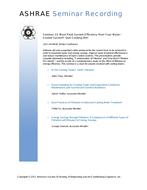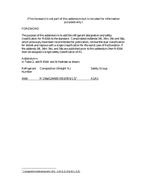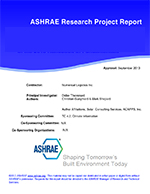Proper distribution of conditioned air plays an important role in both human thermal comfort and indoor air quality. To understand the air distribution, experimental investigations airflow and temperature distributions for indoor environmental conditions are essential but expensive and time consuming. Technological advances in computer hardware and development of computational software in recent years have made numerical simulations of such flow conditions possible. Nielsen et al. (1996) and Singh (1999) suggested that blockage and heat loads from occupants in an enclosure could have a significant effect on air distribution. Studying the occupant effect on air distribution inside an enclosure becomes imperative.
The objectives of this study were to
- develop a CFD model for an aircraft cabin section and
- determine the effects of occupant heat loads on the numerical results.
The computations were performed using a commercial software for an airplane fuselage section (hereafter, called cabin). Conditioned air entered the cabin through a three-slot diffuser located on the ceiling, flowed along the aisle, and exited through a return located on the floor on both sides along the cabin. All walls and ceiling were insulated. This paper presents velocity, temperature, and turbulence kinetic energy profiles at two cross-sectional planes of the cabin. Good agreements between the numerical simulation results and experimental data were achieved.
Units: Dual
Citation: Symposium Papers, Atlantic City, 2002
Product Details
- Published:
- 2002
- Number of Pages:
- 9
- File Size:
- 1 file , 3.4 MB
- Product Code(s):
- D-7033


